The latest labour force data for New Zealand showed that filled jobs fell by 0.7% in Q3, the second consecutive quarterly decline.
The number of filled jobs also recorded their first annual decline in over a decade.
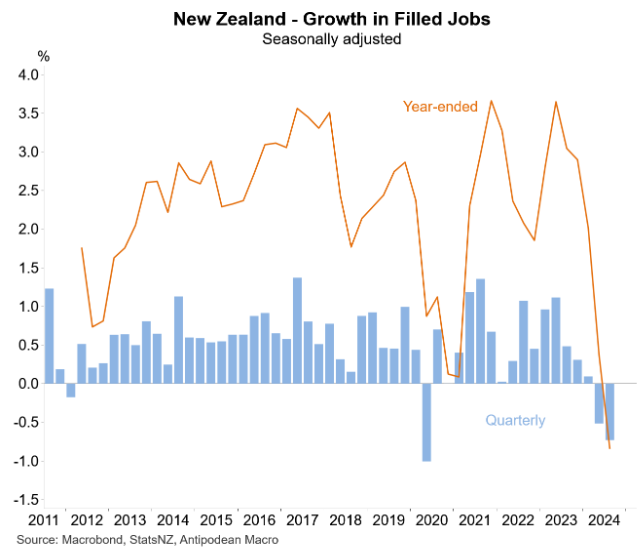
Average earnings growth in New Zealand also declined in Q3, pushing annual growth to below 2%.
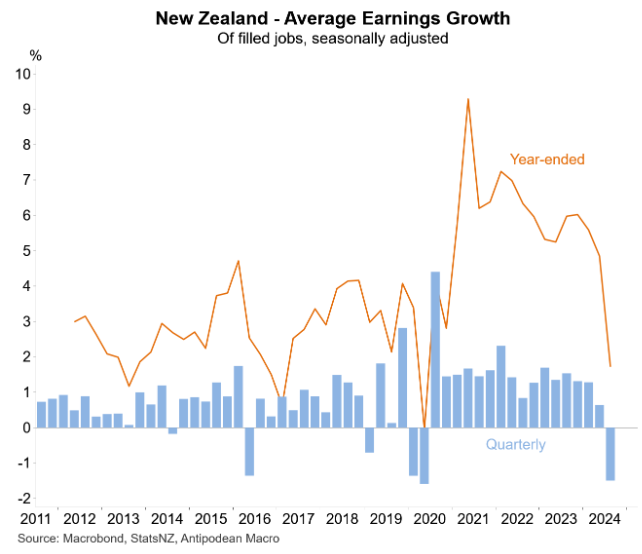
By contrast, the November labour force release from the Australian Bureau of Statistics (ABS) reported that Australia’s unemployment rate fell to 3.9%. This compares to 4.8% for New Zealand in Q3.
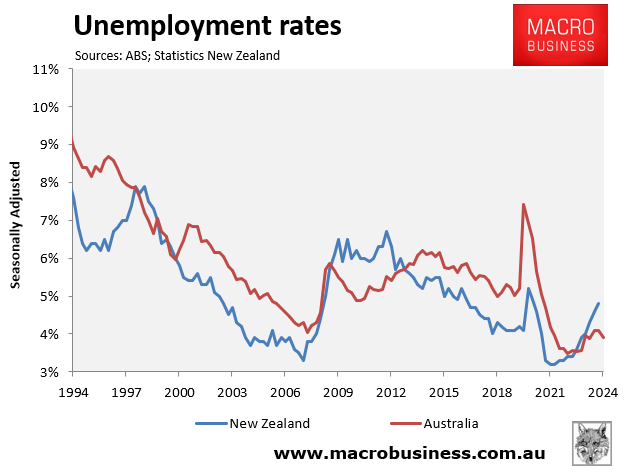
The diverging outcomes have resulted in an influx of Kiwis to Australia.
New data from Statistics New Zealand shows that 53,000 Kiwi citizens departed the country in the year to October, up from 41,000 the year prior.
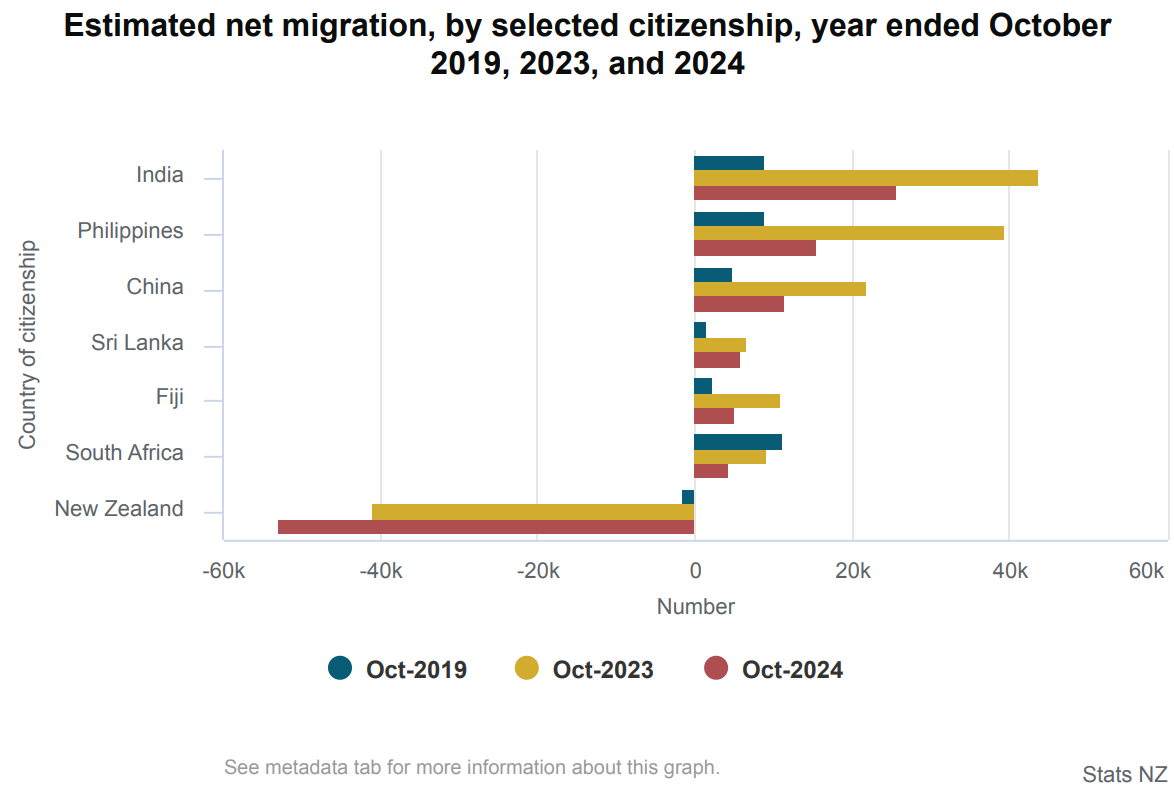
This net loss of Kiwi citizens was more than offset by net arrivals of non-citizens, which was 91,700 in the year to October 2024, dominated by citizens from India (43,600) and the Philippines (39,500). However, this was down from a non-citizen net migration gain of 176,900 in the October 2023 year.
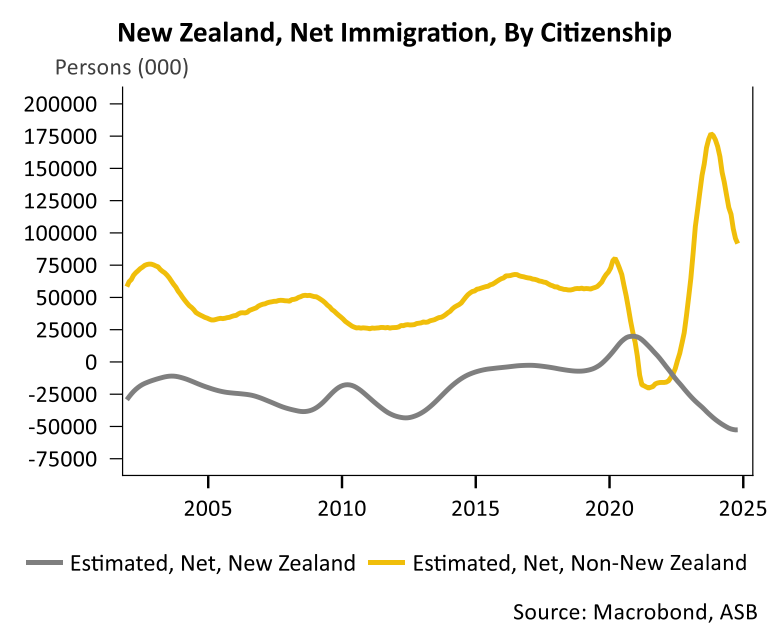
Total annual net permanent and long-term migration fell to 38,778, the lowest since December 2022.
Statistics New Zealand also reported a provisional net migration loss of 30,100 people to Australia in the year ended March 2024. This compares with a net migration loss to Australia of 18,700 in the year ended March 2023.
The main reason why Australia’s labour market has been so much stronger than New Zealand’s is because it has experienced extraordinary NDIS-induced growth in healthcare and social assistance jobs over the past two years.
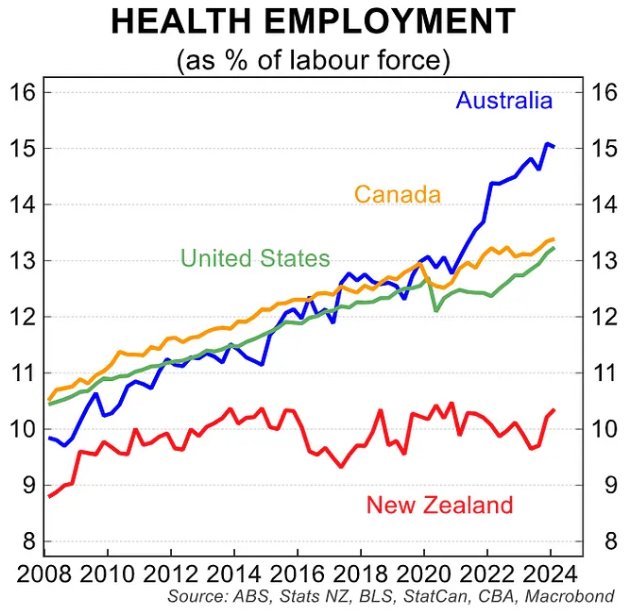
In comparison, New Zealand’s healthcare and social assistance jobs recorded minimal change.

